 Back to military claims
Contents
Back to military claims
Contents
Contents
Contents
Introduction
2018: a historical year for the British Armed Forces.
All services across air, land and sea are working towards a monumental shift in their approach to their workforce.
By the end of 2018, every role in the Armed Forces will be open to women.
The British Army, the Royal Navy and the Royal Marines will finally follow the Royal Air Force, whose ground-fighting force – and thereby its entire staff complement – became open to women in 2017.
It’s an incredible step towards equality that acknowledges women’s immense contribution to the military – both historically and in the present day. They have been instrumental in the success of our armed forces, whether assisting troops in support roles or serving side-by-side with servicemen on the ground.
one in ten servicewomen reported being sexually assaulted
Unfortunately, they, like many women across the UK, are forced to contend with one specific issue at a rate far above that of their male colleagues: workplace sexual harassment. In fact, according to the Armed Forces’ own records one in ten servicewomen reported being sexually assaulted in the past year.
As workplace sexual harassment threatens to discourage their progress and blight their potential, servicewomen have a difficult job ahead.
Join us as we discover the incredible women working hard to excel in the Armed Forces, learn about the history of women in the military and explore the statistics surrounding sexual harassment in the military.
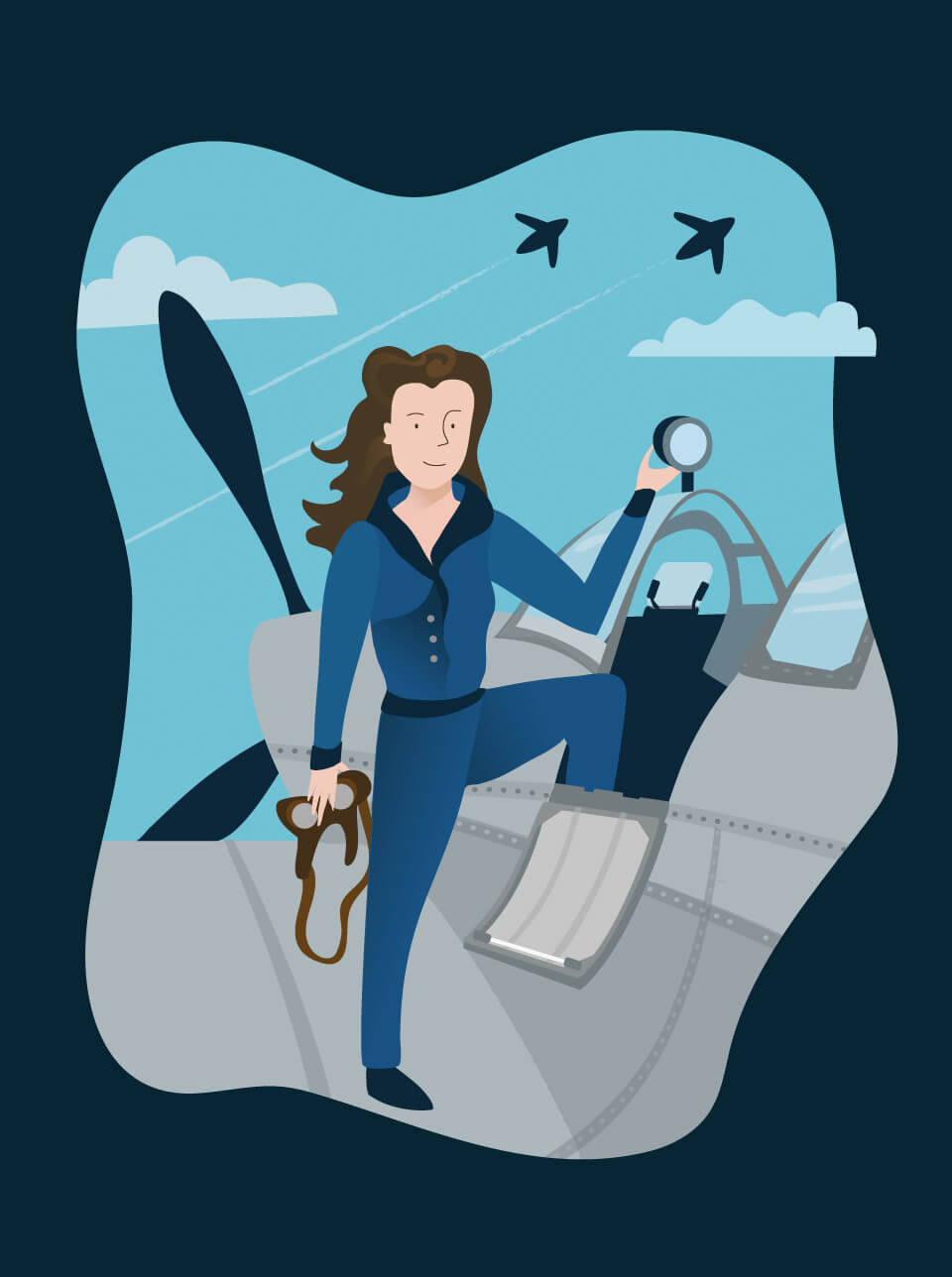
A brief history
Women have held unofficial roles in the military since the very beginning. As wives of servicemen, or as self-employed cooks, nurses, midwives, seamstresses and laundresses. They were instrumental in boosting morale, caring for the soldiers’ physical and emotional wellbeing, and strengthening relationships – all crucial in getting the troops through tough conditions and life-threatening situations.
Official recognition
Things became official as early as 1696, when the Royal Navy employed women as nurses and laundresses. The best part? In this 17th century role, the gender pay gap was non-existent: women were paid the same as any able seaman. 1
In this 17th century role, the gender pay gap was non-existent
The formation of several nursing services allowed women further official participation in the Armed Forces: The Queen Alexandra’s Royal Naval Nursing Service in 18842, the Queen Alexandra’s Royal Army Nursing Corps in 1902 and the Princess Mary’s Royal Air Force Nursing Service in 1918. All three major branches of the Armed Forces thus became open to women.
In the meantime, over 7,000 women and 30,000 airwomen respectively joined the Women’s Army Auxiliary Corps (from 1917-1920)3 and the Women’s Royal Air Force (from 1918-1920)4.
Secret Services
In World War II, 6,760 women served at the then top-secret Bletchley Park as cryptanalysts, code clerks, traffic analysts, linguists, dispatch riders and operators of the cutting-edge COLOSSUS, the world’s first computer.
Four years after the war ended, women became officially recognized as a permanent part of the British Armed Forces, and, in 1992, became integrated into regular units.
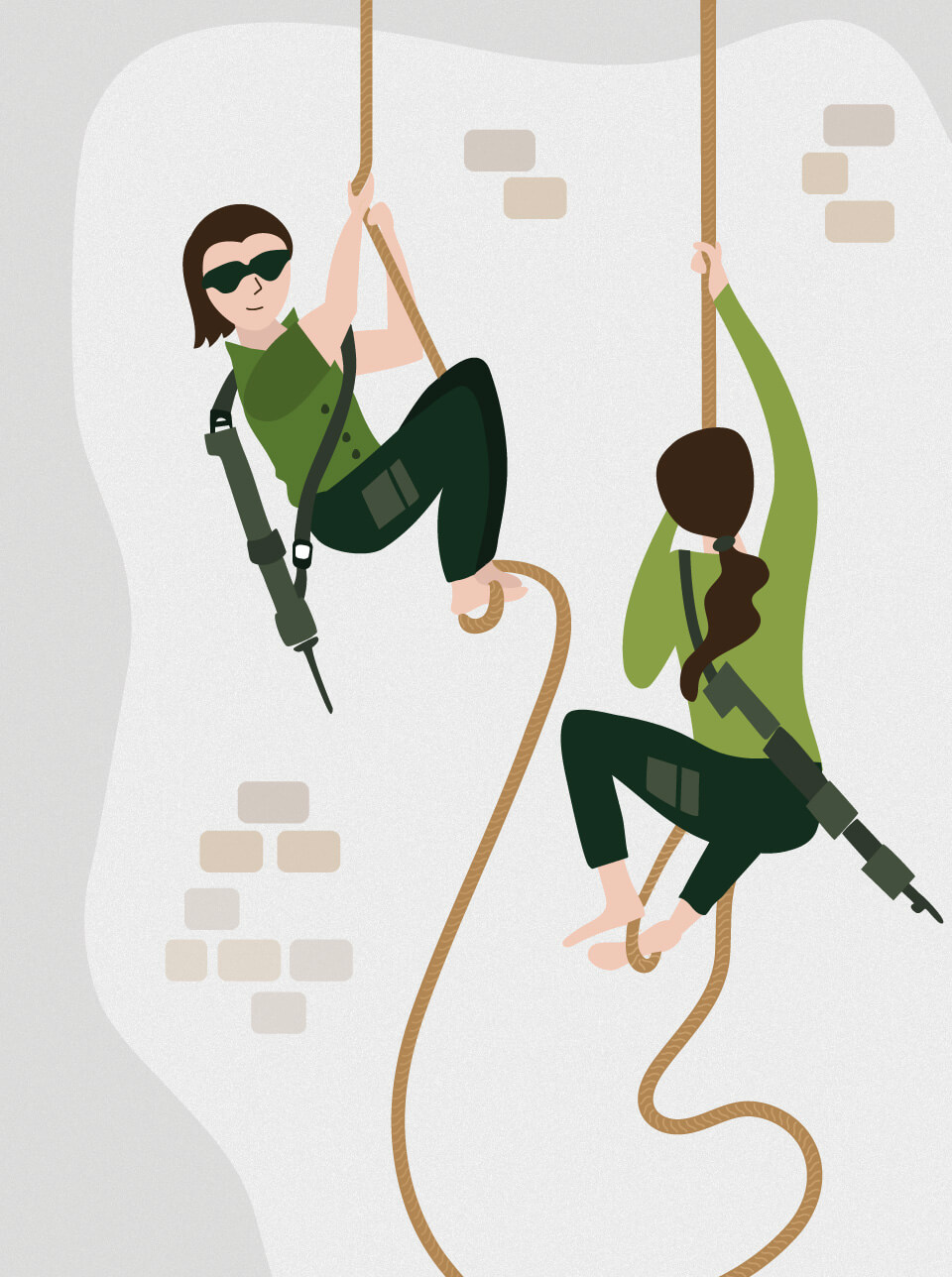
Women in the military today
Throughout the 20th century, women served with distinction, as medics, engineers, machine operators, intelligence officers and pilots, to name a few.
EXCELLING IN THE FIELD
Come forward into the 21st century, we see that female soldiers have continued to put their lives on the line for their country.
Sergeant Chantelle Taylor: first female British solider to kill an enemy
Six servicewomen were killed in action in Iraq (2003-2011) while another three were killed in Afghanistan (2001-2014). Private Michelle Norris became the first woman to be awarded the Military Cross, having rescued her wounded commander while under sniper fire in Iraq. In 2008, Sergeant Chantelle Taylor became the first female British soldier to kill an enemy combatant when her convoy was ambushed in a firefight in Afghanistan.
A QUESTION OF ABILITY?
Wherever they are stationed, women have continued to make a real difference to the Armed Forces. By 2014, women were allowed in all areas of the military except one: ground close combat (GCC) roles where soldiers fight on the ground in close contact with the enemy.
But were women really uncapable of performing in GCC roles? Both the Secretary of State for Defence, Michael Fallon and the Prime Minister believed otherwise.
David Cameron: “It’s vital our Armed Forces reflect our society.”
Two Women in Close Combat reviews soon followed, 5 and another in 2015/166. They confirmed what much of the Armed Forces were thinking: for the sake of greater diversity, innovation, equality of opportunity and the immense talent of female recruits, the ban against women in GCC roles should end once and for all.
In 2016, then-Prime Minister David Cameron added: “It is vital that our Armed Forces are world class and reflect the society we live in. Lifting this ban is a major step.”7
MAKING STRIDES
In 2017, the Royal Air Force became the first branch of the British military to open every role to female service personnel. By the end of 2018, the Royal Navy, the Royal Marines and the British Army will have followed suit.
What do the numbers look like as we prepare for this history-in-the-making moment? Women currently make up 10.2% of the total strength of the Regular Armed Forces, with 15,270 women serving alongside approximately 149,700 men. Broken down by branch, the RAF has consistently had the highest proportion of women, followed by the Royal Navy, the British Army and the Royal Marines.
Women make up 10.2% of the Armed Forces
With the British government endeavouring to increase the proportion of women serving in the Armed Forces to 15% by 2020, the future looks bright for women determined to serve their country.
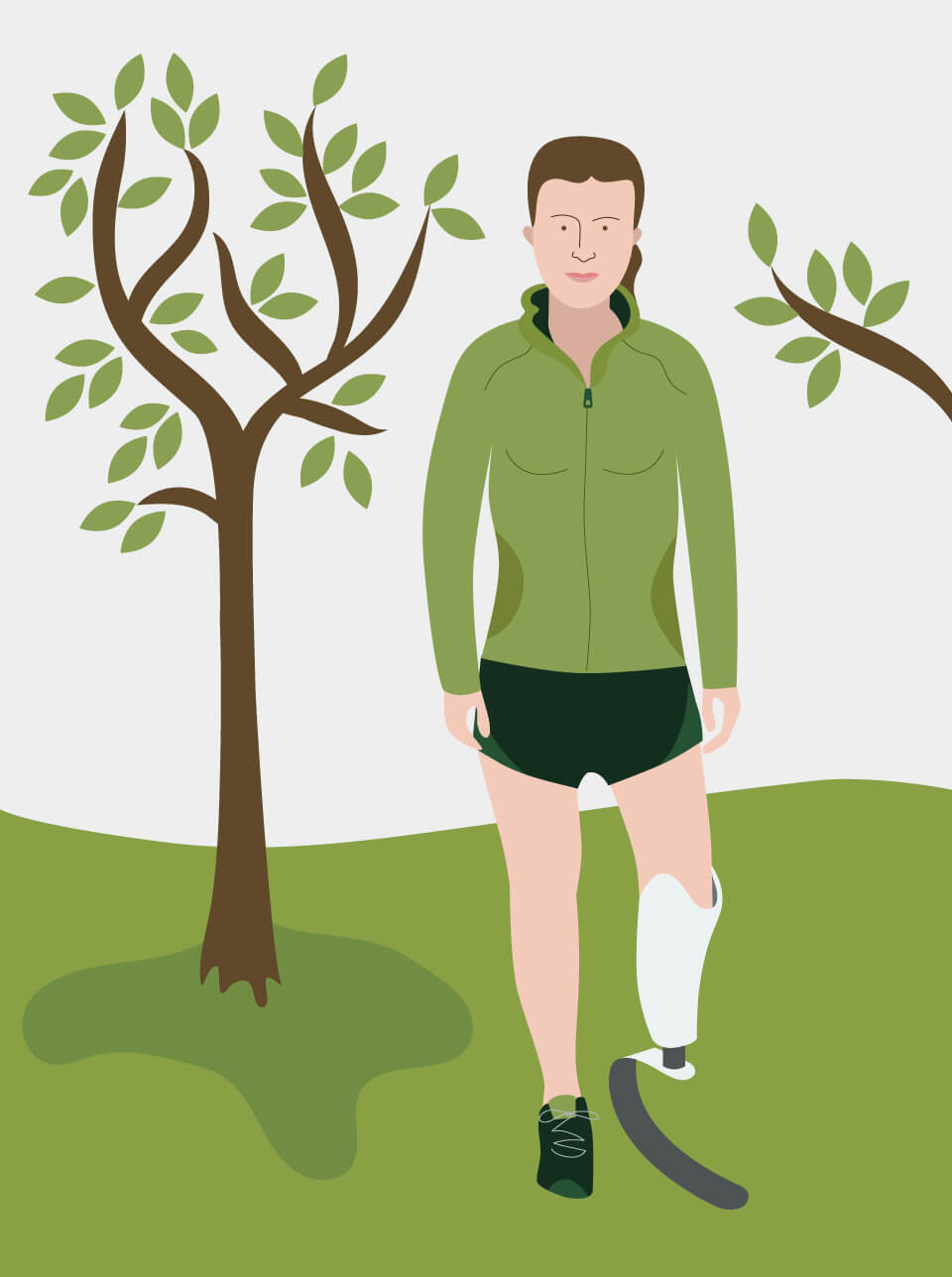
Celebrating Kate Philp
Former Royal Artillery Officer Major Kate Philp entered the record books in 2008. She became the first British female soldier to lose a limb in combat when she lost her left leg below the knee to an improvised explosive device (IED) in Afghanistan.
COMMANDING OFFICER
Before Philp turned 25, she had become a Royal Artillery Officer and commanded a group of soldiers. Her technical role evolved from commanding and firing guns, to deploying them, to directing fire and finally to higher-level targeting.
Dauntingly, her first command was on an operational tour
“I’ll always remember the first time I wore my RA beret,” she says, “I felt I’d made it.”
Dauntingly, her first command – just five days after training – was on an operational tour in Iraq. “However,” she says, “it presented a golden opportunity to get to know my soldiers better – crucial to properly serve them.”
BEING A WOMAN IN THE FORCES
“I honestly don’t think there are any differences in gender in the Armed Forces,” says Philp. “My focus was always on being the best officer I could be: fit, good at my technical job and always putting my soldiers first. Being a woman doesn’t make these things any more or less difficult.”
The Army is more of a vocation than a job
“I loved my 13 years and would recommend it to any man or woman who is interested,” says Philp, adding, “but the Army is more of a vocation than a job. If you’re fully invested, you get an awful lot out of it.”
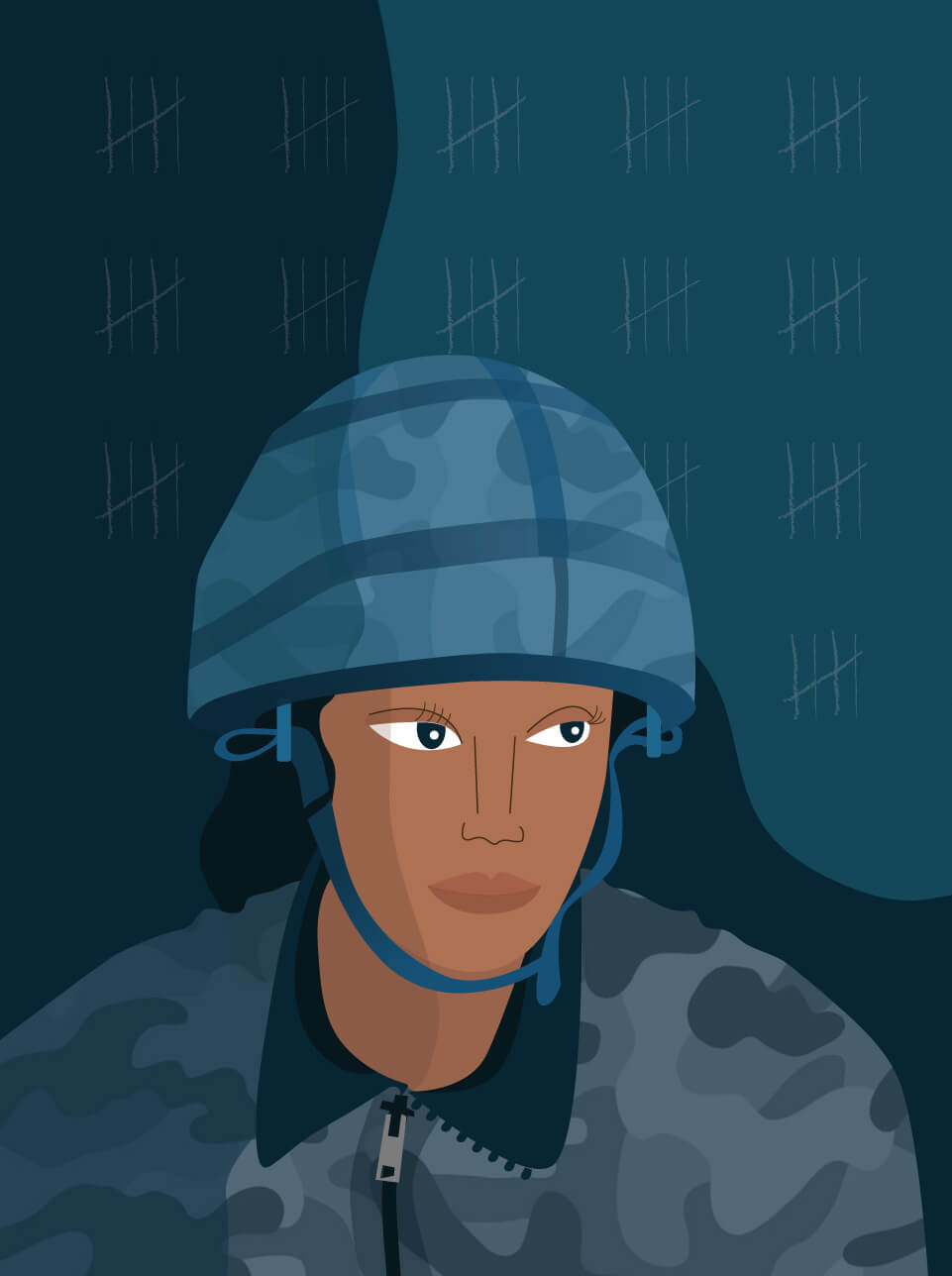
Sexual harassment in the military
From history-making achievements to excellent day-to-day service, women continue to make positive contributions to the Armed Forces. Unfortunately, one specific issue threatens to hamper women’s progress.
THE STORY IN NUMBERS
Look into the most recent Sexual Harassment Survey Reports for the British Army8, the Royal Navy and the Royal Marines9 and the findings are stark.
Servicewomen were more likely than servicemen to experience sexual harassment
The British Army's report concluded that servicewomen were significantly more likely than servicemen to experience all three forms of sexual harassment investigated: generalised sexualised behaviours, targeted sexualised behaviours and particularly aggravated behaviours such as sexual assault.
The report for the Royal Navy and the Royal Marines showed similar findings: servicewomen were significantly more likely than servicemen to have had a particularly upsetting experience: 15% compared to just 3%.
If we were to extrapolate the findings from the reports, approximately 2,040 servicewomen in the Army – or 4,100 in the entire Armed Forces – will have experienced some form of sexual harassment at work.
SEXUAL HARASSMENT: THE AFTERMATH
When sexual harassment in the military goes unchecked, the disruption to the working lives of military personnel could spell disaster for our nation’s defence.
In 2017, the Service Complaints Ombudsman for the Armed Forces released her annual report, painting a disheartening picture of the complaints system in the military. The report found that women were overrepresented in the complaints system, making 20% of complaints while making up only 10% of the Armed Forces. What’s more, the report found that the majority who did make a complaint were dissatisfied with the process overall.
Of 126 victims, a staggering 100 were female
Looking at the Service Police for the Armed Forces,10 in the same year, they conducted 109 sexual harassment investigations and 14 historical sexual offence investigations. Of the 126 victims, a staggering 100 were female. In comparison, of the 118 suspects that were involved, 115 were male, and just 29 were found guilty of a sexual offence.
With sexual harassment in the military continuing to make working life difficult for servicewomen, and to a lesser extent servicemen, what impact might this have on the future of the British Armed Forces?
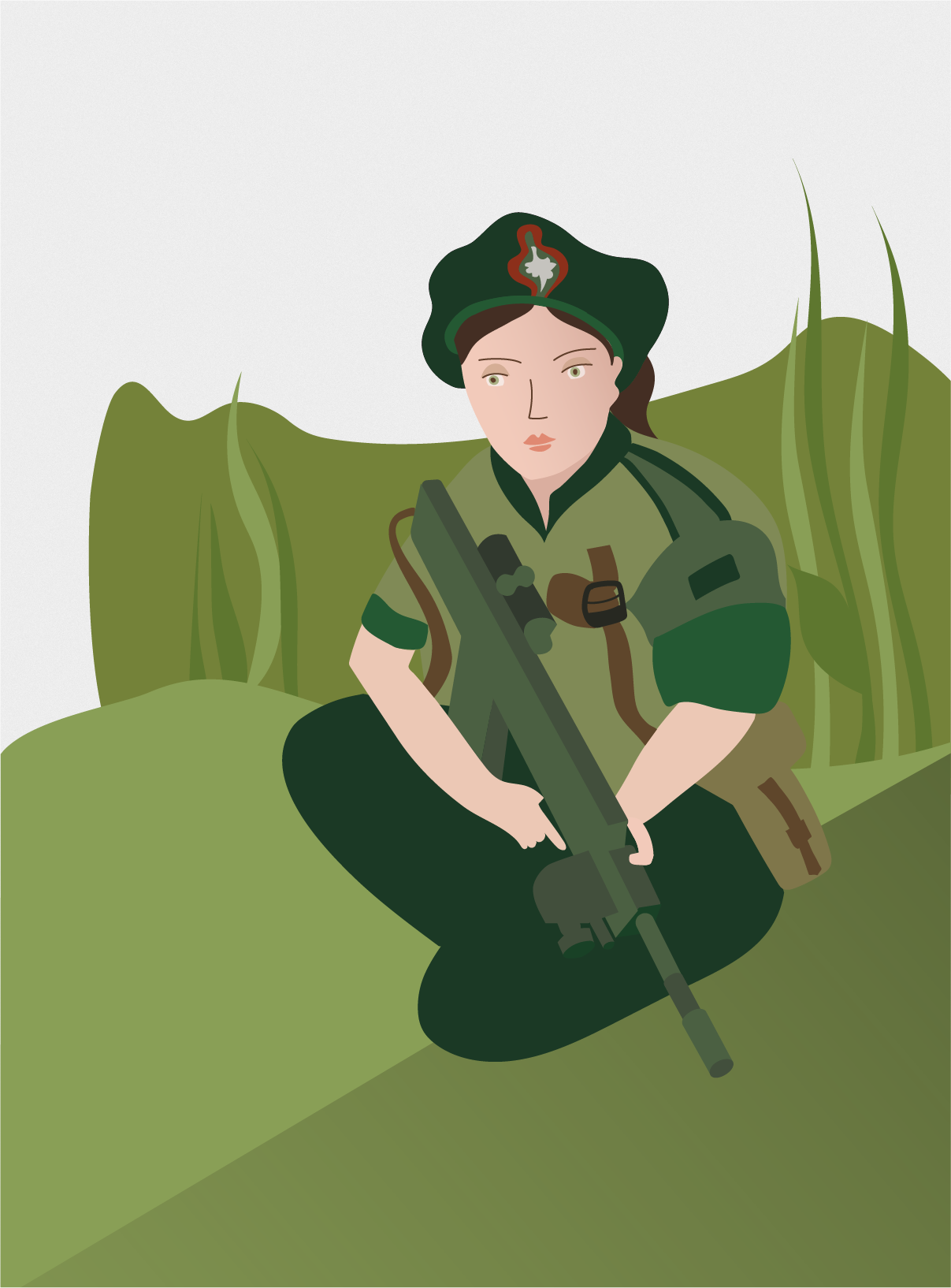
The cost of sexual harassment
With the Armed Forces facing a steadily decreasing number of willing recruits and their rates of sexual harassment placing the military as the worst-offending uniformed sector in the UK11, attracting strong, exemplary candidates becomes all the more difficult.
The cost to the military – and subsequently the health of our armed forces – could be dire.
THE REPERCUSSIONS OF SEXUAL HARASSMENT
For servicewomen and servicemen, the most-commonly reported impact of experiencing sexual harassment was losing respect for their colleagues.
The cost to the military could be dire
Servicewomen and servicemen reported no longer enjoying their work, feeling unable to do their job well, being less motivated, and receiving a lower than expected performance evaluation. All understandable under the circumstances, but each contributing to a weakening of our military strength.
Added to that, reports have shown that the number of personnel leaving military service early has been on the increase since 200412, while mental health disorders in the military increased by 78% in the last eight years.13
When the defence of the nation is at stake, a demotivated, struggling force without mutual respect, trust and harmony could have catastrophic consequences.
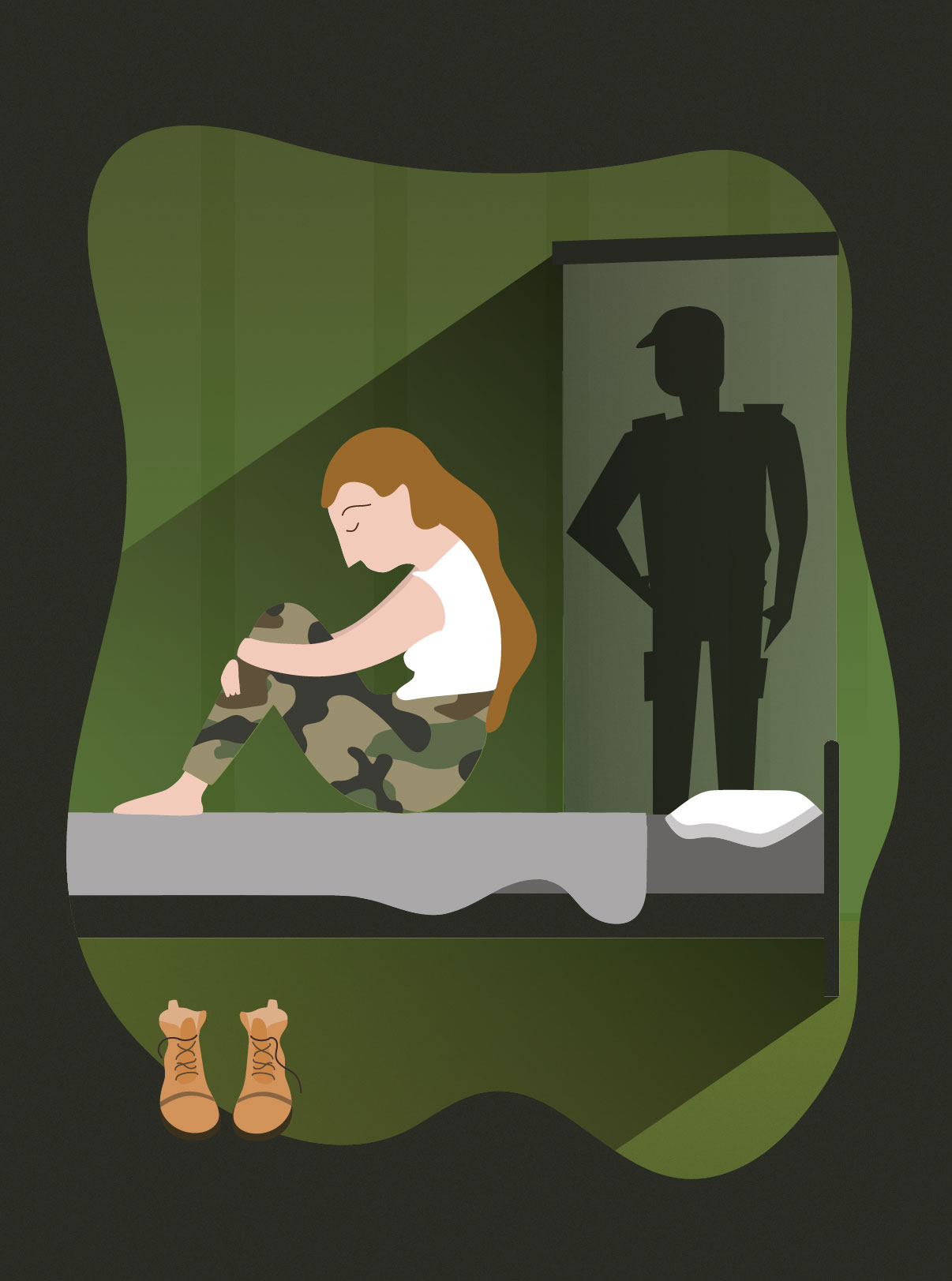
Rebecca Crookshank: Hero of Her Story
The Everyday Sexism Project, a collection of anonymous submissions, paints a dark picture of the gender discrimination women face on a daily basis. From partners, friends, colleagues and even strangers, unsolicited and unwelcome comments and unsavoury attitudes abound.
Some of the real experiences shared on the site include:
“I had to daily re-prove my reason for being [in the senior ranks of the Army] all the while being told to keep quiet, sent dick pics, and moved out of my job when I reported a man for inappropriate behaviour.”
“I endured three years of sexual harassment from my superior in the British Army. He was awarded an MBE despite being under investigation (and found guilty) while I was medically discharged due to the mental breakdown he inflicted.”
Sexual harassment, in particular, features strongly in the themes gathered by the Everyday Sexism Project. It’s an issue Rebecca Crookshank, former member of the Royal Air Force, knows all too well. This is her story.
“I had a creative calling when I was younger; I really enjoyed acting and performing. But, I also had a Royal Marine father and grandfather. I wanted to be just as tough as my dad, join the Armed Forces and travel like him, and get really fit and learn skills, so I just went for it.
I just had a bad feeling about it
I’m really proud of leaving home, literally days after my 17th birthday, to join the Armed Forces. The basic training was 7.5 weeks and was really challenging physically and on an academic level; it was a very different way of learning.
I was sent to the Falkland Islands for a four-month detachment. I was on the main island for about 8 weeks and then went to an isolated mountain side for 4 weeks. I’d heard stories about the girls that had gone up there, and I was already making my protest heard. I just had a bad feeling about it.
It was violating, humiliating and sexually inappropriate.
A CRUDE WELCOME
“When I arrived on the mountain, there was a line of blokes mooning me on the heliport.
On that very first night, I was subjected to an initiation ceremony. The men were completely naked with nothing but rubber gloves on their genitals, putting me in sexual positions and making me sit on them.
I tried to laugh through it, but it was really violating, humiliating and sexually inappropriate. That set the tone, really. I was subjected to insistent and relentless harassment, much of it fuelled by the free-flowing alcohol. At one point, I was cable-tied to a bed.”
My private space; the only space that was just for me
“When I made a complaint, the flight lieutenant who was in charge insisted on having a meeting with me in my bedroom. My private space; the only space that was just for me and felt safe. He told me I needed to “suck it up and stick it out”, offered me a flight on a Tornado F3 in exchange and threatened me with a bad report. I was very much pushed into a corner and silenced.
Since I told my story, I’ve had many women and men tell me about their experiences. For so many of them, silencing was a common theme. The institution – the British Armed Forces – using their reputation and sheer size to dismiss your complaints and threaten to take away your livelihood. Now, 15 years later, the stories are still the same.”
THE RAF’s FRONTLINE BATTLE
“And what has the RAF had to say about my experience, and that of countless women and men? No comment. They’ve chosen not to comment, and I think that says a lot.
Because for women in the Armed Forces, there’s already a frontline battle in terms of inequality. There should be solidarity. Nobody should be subject to any of those behaviours. Yet for women, they’re fighting a battle from the very beginning.
But, if one other person can hear my story and choose not to sexually harass or abuse another human being, then something positive has come out of this. I’m finding my own sense of justice through the work I’m doing to raise awareness.
And I’ve realised…
I’m not a victim of this story. I’m actually a hero.
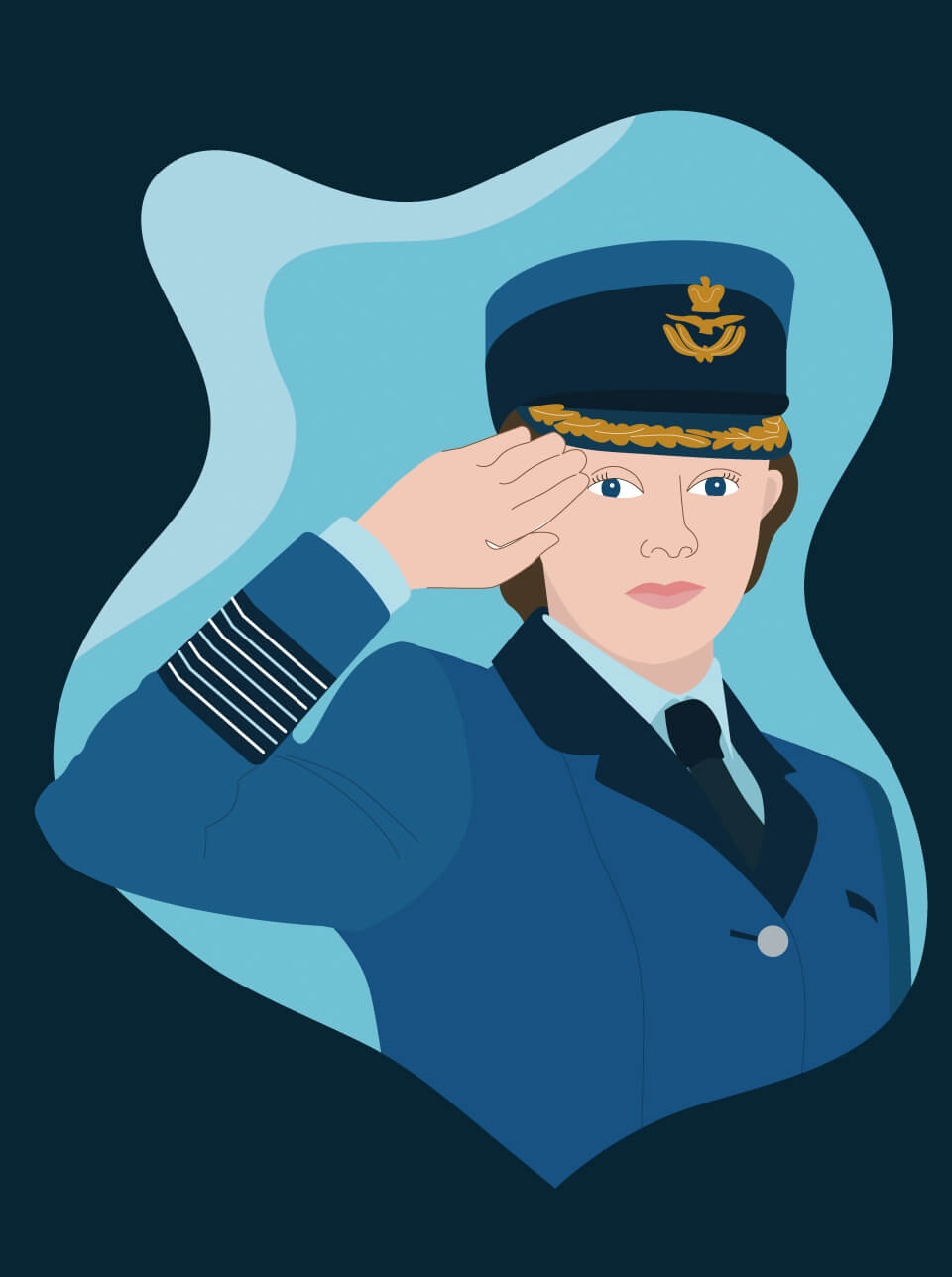
The End Game
So, does the British Armed Forces have a problem with sexual harassment in the workplace? Its female personnel overwhelmingly believe it does.
The Armed Forces’ own records show an alarmingly skewed experience of sexual harassment for servicewomen, and the loss to the military could be substantial. We may never know the excellent female medics, pilots, weapons engineers, strategists, leaders and other potential heroines that could have excelled in defence of our nation, but were driven away by a toxic workplace.
We need to do more to encourage courageous, determined and committed women to apply for, and
With the right support, the right attitude and the right approach to mixed-unit cohesion, the British Armed Forces could become the biggest exemplar of how formidable a diverse and integrated military can be.
If you have experienced sexual harassment in the British Armed Forces, Bolt Burdon Kemp could help you seek the compensation you deserve. Contact our dedicated military claims solicitors to discuss your case in complete confidence.
References
- 1. https://en.wikipedia.org/wiki/Women_in_the_military_by_country
- 2. https://www.qarnns.co.uk/qarnns-archive
- 3. http://www.nationalarchives.gov.uk/help-with-your-research/research-guides/womens-army-auxiliary-corps-service-records-1917-1920/
- 4. http://www.nationalarchives.gov.uk/help-with-your-research/research-guides/womens-royal-air-force-service-records-1918-1920/
- 5. https://www.gov.uk/government/publications/women-in-ground-close-combat-gcc-review-paper
- 6. https://www.gov.uk/government/publications/women-in-ground-close-combat-roles-review-2016
- 7. https://www.politicshome.com/news/uk/defence/military-campaigns/news/77093/david-cameron-lifts-ban-women-serving-ground-combat
- 8. https://assets.publishing.service.gov.uk/government/uploads/system/uploads/attachment_data/file/446224/ADR005000-Sexual_Harassment_Report.pdf
- 9. https://assets.publishing.service.gov.uk/government/uploads/system/uploads/attachment_data/file/522906/20160512_RN_RM_2015_Sexual_Harassment_Report.pdf
- 10. https://assets.publishing.service.gov.uk/government/uploads/system/uploads/attachment_data/file/694466/20180326-Sexual_Offences_in_the_SJS_Official_Stats_2017_FINAL.pdf
- 11. http://www.bbc.co.uk/news/uk-32780009
- 12. https://publications.parliament.uk/pa/cm200708/cmselect/cmdfence/424/424.pdf
- 13. https://www.independent.co.uk/news/uk/home-news/mental-health-issues-illness-uk-armed-forces-army-a7086996.html